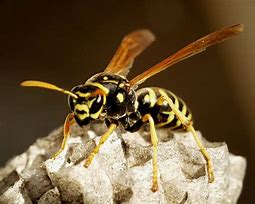Table of Contents
The wasp queen, or “wespenkönigin,” is a pivotal figure in the life cycle of wasps. As the matriarch of the colony, the queen’s role extends beyond reproduction; she is the cornerstone of the colony’s survival and organization. This article delves into the life of the wasp queen, exploring her biological makeup, the nuances of her role, and her impact on the colony and ecosystem.
Types and Categories of Wasp Queens wespenkönigin
- Vespidae Family
- Paper Wasps
- Yellowjackets
- Hornets
- Solitary vs. Social Wasps
- Behavioral Differences
- Nesting Habits
Symptoms and Signs of Wasp Queen Activity
- Colony Formation Indicators wespenkönigin
- Increased Wasp Activity wespenkönigin
- Early Nest Building wespenkönigin
- Seasonal Patterns
- Spring Emergence
- Late Summer Proliferation
Causes and Risk Factors
- Environmental Factors
- Climate Influence
- Habitat Availability
- Biological Factors
- Genetic Traits
- Predation and Parasitism
Diagnosis and Tests
- Identifying the Queen
- Physical Characteristics
- Behavioral Observations
- Nest Analysis
- Structure and Composition
- Location Specifics
Treatment Options
- Pest Control Measures
- Chemical Treatments
- Natural Predators
- Preventive Strategies
- Nest Removal
- Habitat Modification
Preventive Measures
- Home Maintenance
- Sealing Entry Points
- Regular Inspections
- Environmental Management
- Reducing Attractants
- Encouraging Natural Predators
Personal Stories or Case Studies
- Encounters with Wasp Queens
- Homeowner Experiences
- Beekeeper Insights
- Colony Behavior Observations
- Seasonal Changes
- Adaptive Strategies
Expert Insights
- Entomologists’ Perspectives
- Lifecycle Studies
- Ecological Impact
- Pest Control Professionals
- Effective Management Techniques
- Safety Considerations
Conclusion
Understanding the wasp queen’s role is crucial for both ecological balance and human coexistence. By appreciating her importance and implementing effective management strategies, we can minimize negative encounters while supporting biodiversity.
Read Also: Managing Canine Anxiety: Identifying Triggers and Benefits of CBD Oil Treatment
